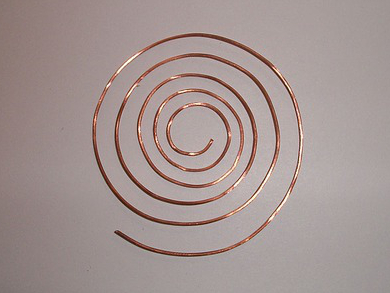Ultrathin nanowires have large surface areas, good properties for energy transport, and their surface characteristics can be tuned by functionalization. Due to their small diameters, they can also exhibit properties such as especially low thermal conductivity, negative magnetoresistance, and quantum conductance. These qualities can make them very useful in a broad range of applications, for example, as catalyst supports or in sensors.
Shu-Hong Yu and colleagues, University of Science and Technology of China, Hefei, have turned ultrathin tellurium nanowires (TeNWs) into nanorings using a Pickering emulsion at room temperature. A Pickering emulsion is a mixture that is stabilized by solid particles which adsorb onto the interface between the phases, e.g., between oil and water. The team used hydrophilic TeNWs with diameters of 4–9 nm and dispersed them in a solution composed of N,N-dimethylformamide (DMF), and ammonium hydroxide. They then mixed this hydrophilic phase with 1,2-dichlorobenzene (DCB) and a surfactant.
The nanowires assemble at the interface between the phases; only very few of them could be observed on the inside of the droplets.The TeNWs form rings with diameters of roughly 500–800 nm, using the droplets as a template. If the droplets are removed, e.g., by using ultrasound, the rings uncoil again. According to the researchers, these results offer a pathway to manipulate one-dimensional nanostructures and generate unique assembled structures with interesting properties.
- Coiling ultrathin tellurium nanowires into nanorings by Pickering emulsion,
Ye Yang, Jianwei Liu, Shu-Hong Yu,
Chem. Commun. 2016.
DOI: 10.1039/C6CC02985J




![Synthesis of [c2]Daisy Chains via Mechanochemistry](https://www.chemistryviews.org/wp-content/uploads/2025/04/202504_RotaxanesWithSolidStateMechanochemistry-125x94.png)